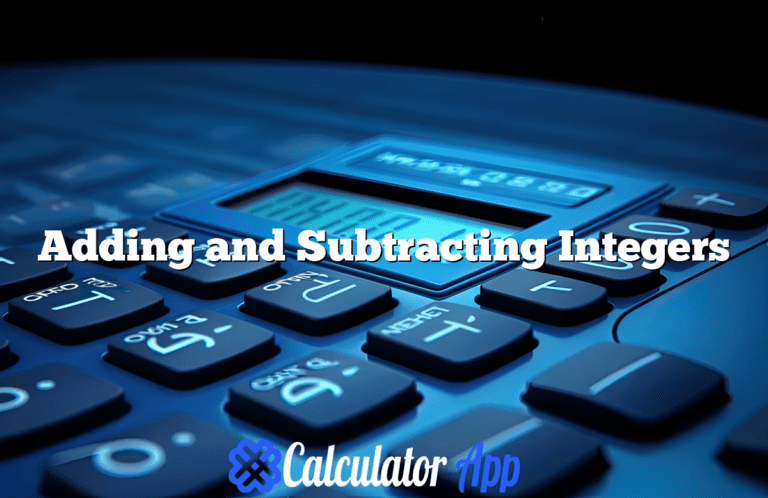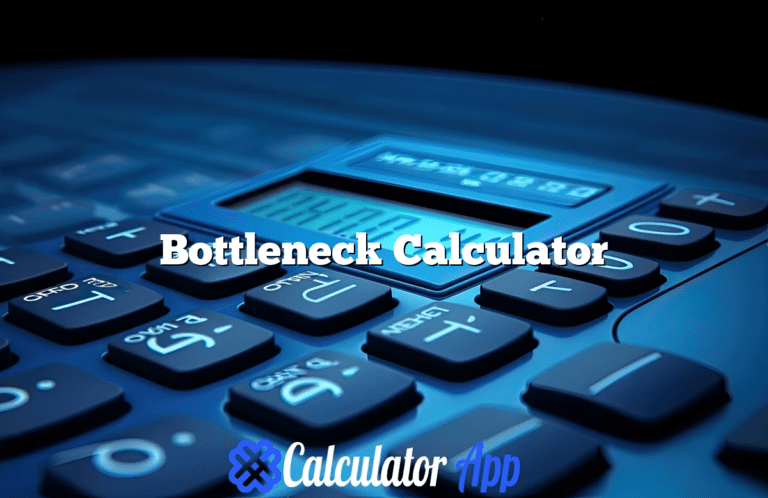A Complete Guide to Using the Round to the Nearest Tenth Calculator
In today’s fast-paced world, where numbers play a crucial role in decision-making, we often come across situations where exact decimal values are not required. Rounding numbers is a common method used to simplify calculations, making numbers easier to interpret and work with. One of the most commonly used rounding techniques is rounding to the nearest tenth, especially when working with decimal values. A Round to the Nearest Tenth Calculator is an essential tool that helps make this process quick and error-free.
This article will dive into what rounding is, why it is important, how to round numbers to the nearest tenth, and how to use a Round to the Nearest Tenth Calculator. We will also explore some advanced features of this calculator, its benefits, and its real-life applications.
What is Rounding?
Rounding is the process of reducing the digits of a number while keeping it close to its original value. The purpose is to simplify the number and make it easier to read or use in calculations. When rounding, we often focus on specific decimal places, such as the nearest tenth, nearest whole number, or nearest hundredth.
Rounding is useful in many situations, especially when extreme precision is unnecessary. For example, when reporting financial figures, scientific measurements, or simply making quick estimations, rounded numbers are more practical to handle.
Why Do We Round Numbers?
Rounding is used across many industries and everyday life because it helps make calculations faster, easier, and more digestible. Here are some common reasons why we round numbers:
- Simplifying Complex Numbers: Rounding helps to reduce the number of digits, making a number easier to work with. For instance, instead of handling a lengthy decimal such as 4.56789, we can round it to 4.6, making it more manageable.
- Improving Clarity: Long decimal numbers can be confusing, especially when communicating information. Rounding makes numbers more concise and easier to understand for the average person.
- Estimations and Quick Decisions: In many situations, exact values are not necessary. Rounding allows for quick estimations, which can be especially useful in finance, project planning, or everyday tasks like shopping.
- Time-Efficiency: In industries where time is critical, rounding can save valuable time by eliminating unnecessary precision. Whether it’s financial calculations or engineering projects, rounding ensures that the focus remains on what’s important.
Understanding Decimal Places
Before diving into rounding, it’s important to understand decimal places. Decimal numbers are represented by digits to the right of the decimal point. These digits represent smaller portions of a whole number.
- The first digit to the right of the decimal is the tenths place.
- The second digit to the right is the hundredths place.
- The third digit is the thousandths place, and so on.
For example, in the number 5.346, the digit 3 is in the tenths place, 4 is in the hundredths place, and 6 is in the thousandths place.
How to Round to the Nearest Tenth?
Rounding to the nearest tenth means we are simplifying a decimal number to one decimal place by focusing on the value in the tenths position. The process is simple but requires careful attention to the second digit after the decimal point (hundredths place).
Steps to Round a Number to the Nearest Tenth:
- Identify the Tenths Place: The first digit to the right of the decimal point is the tenths place. For instance, in 7.54, the digit 5 is in the tenths place.
- Check the Hundredths Place: The second digit after the decimal point is the hundredths place. In the number 7.54, the digit 4 is in the hundredths place.
- Decide Whether to Round Up or Down:
- If the hundredths place is 5 or greater, round up the tenths place by one.
- If the hundredths place is less than 5, leave the tenths place as it is.
For example: (See Also: Minutes to Decimal Hours Calculator)
- In 7.54, the hundredths place is 4 (less than 5), so we keep the tenths place as 5. The rounded number is 7.5.
- In 8.76, the hundredths place is 6 (greater than 5), so we round the tenths place up from 7 to 8. The rounded number is 8.8.
Examples of Rounding to the Nearest Tenth:
Let’s look at some common examples to better understand how to round to the nearest tenth.
- Example 1: Round 4.47 to the nearest tenth.
- Tenths place = 4
- Hundredths place = 7
- Since 7 is greater than 5, we round up the tenths place to 5. The result is 4.5.
- Example 2: Round 9.94 to the nearest tenth.
- Tenths place = 9
- Hundredths place = 4
- Since 4 is less than 5, we leave the tenths place as 9. The result is 9.9.
- Example 3: Round 3.01 to the nearest tenth.
- Tenths place = 0
- Hundredths place = 1
- Since 1 is less than 5, we leave the tenths place unchanged. The result is 3.0.
What is a Round to the Nearest Tenth Calculator?
A Round to the Nearest Tenth Calculator is an online tool that helps users quickly and accurately round decimal numbers to one decimal place. The calculator automates the process of rounding, eliminating the need for manual calculations and ensuring accuracy.
How to Use the Round to the Nearest Tenth Calculator:
- Input the Number: Enter the decimal number you want to round in the input field.
- Choose the Rounding Option: Most calculators will automatically round to the nearest tenth, but more advanced versions may allow you to round to the nearest hundredth, whole number, or other decimal places.
- Get the Result: Once you hit the calculate button, the rounded number will appear instantly.
Advanced Features of the Round to the Nearest Tenth Calculator
The advanced Round to the Nearest Tenth Calculator includes several features that make it more than just a basic rounding tool. Here are some key functionalities:
1. Multiple Rounding Options
In addition to rounding to the nearest tenth, the calculator offers options for rounding to the nearest whole number, hundredth, thousandth, and more. This versatility makes it suitable for different mathematical needs.
2. Instant Results
The calculator displays results instantly after entering the number, making it a time-saving tool, especially when dealing with large datasets or performing multiple rounding operations.
3. User-Friendly Interface
The interface is designed to be clean, simple, and intuitive, so even users with no prior experience can easily round numbers without confusion.
4. Error Handling
Built-in error handling ensures that invalid inputs such as letters, symbols, or empty fields are flagged, preventing incorrect results and guiding the user to input the correct values.
5. Clear Button for Resetting
After each calculation, users can reset the input field using the “Clear” button, allowing for consecutive calculations without the need to refresh the page.
6. Mobile Responsiveness
The calculator is optimized for both desktop and mobile devices, ensuring that users can perform their rounding calculations on the go, whether using a smartphone, tablet, or laptop. (See Also: Adding and Subtracting Integers)
Benefits of Using the Round to the Nearest Tenth Calculator
There are numerous benefits to using a dedicated rounding calculator, particularly for users who frequently work with decimal numbers. Let’s explore some key advantages:
1. Time Efficiency
Rounding multiple numbers manually can be time-consuming, especially when precision is required. The calculator saves time by providing instant results, making it perfect for professionals, students, and anyone dealing with large numbers of calculations.
2. Accuracy
Human errors are common in manual rounding, particularly when working with complex decimal numbers. The calculator ensures that each calculation is accurate, eliminating the risk of mistakes.
3. Versatility
With multiple rounding options available, the calculator can be used for various rounding needs, from rounding currency in financial calculations to simplifying scientific data.
4. Easy to Use
The simple and intuitive design ensures that users can easily round numbers without needing extensive knowledge of mathematics or programming.
5. Free Access
The calculator is freely accessible online, meaning that anyone can use it without needing to pay for premium tools or software.
Real-Life Applications of Rounding to the Nearest Tenth
Rounding numbers to the nearest tenth has a wide range of practical applications across various fields, including:
1. Finance and Accounting
Rounding is essential in finance for simplifying monetary values, such as prices, interest rates, and financial reports. It helps make numbers more manageable and easier to present to stakeholders.
2. Science and Engineering
Scientists and engineers frequently round measurements to the nearest tenth to maintain an appropriate level of precision while simplifying data analysis. For instance, in physics experiments or chemistry calculations, overly precise numbers may complicate the results.
3. Education and Teaching
In classrooms, teachers use rounding to help students understand and work with decimals, percentages, and fractions. A rounding calculator can assist in teaching rounding techniques and verifying homework problems.
4. Everyday Life
From calculating grocery bills to estimating travel distances, rounding to the nearest tenth simplifies day-to-day calculations and decision-making.
Conclusion
The Round to the Nearest Tenth Calculator is an invaluable tool for simplifying complex decimal numbers into manageable values. Whether you are a student, professional, or someone looking to make quick calculations, this calculator offers convenience, accuracy, and ease of use. With its advanced features and practical applications, it can save time, reduce errors, and improve your overall number-crunching experience.
Now that you understand the benefits and functionalities of the calculator, you can easily incorporate rounding into your daily tasks. Whether for professional calculations or personal estimations, the Round to the Nearest Tenth Calculator is a must-have tool that guarantees precision and simplicity.






